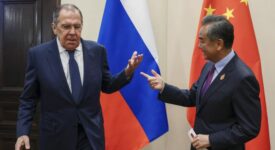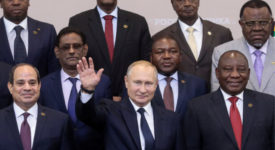Since the collapse of the Soviet Union, Russian policy towards the Middle East has been largely inconsistent and characterized by unexpected and sudden changes in its strategic direction. This has complicated its understanding among Western policymakers as to whether Russia’s presence in the region is a source of cooperation or a potential conflict. On top of this uncertainty, Russia’s strategy in Syria and its refusal to acknowledge the threat posed in the past by Iran’s nuclear and missile programs are of a great concern to Western leaders.
At the same time, Russia was also de facto supporting Western involvement in the Libyan conflict in 2010-2011, helping resolve the Iranian nuclear issues in 2012-2015 and resolving the conflict in Yemen in 2011 and 2012. Still, despite the U-turns and occasional inconsistencies, the nature of Russia’s engagement in the Middle East has shifted since 2012. Following the re-election of Vladimir Putin for a third term in 2012, the Kremlin substantially boosted its presence in the region.
Overall, Russia became more deeply engaged when Moscow launched its airstrikes in Syria in September 2015. This was unprecedented. Before September 2015, Russia had largely been avoiding any fully-fledged involvement in military conflicts in the region. Syria also saw Russia’s first deployment of air force instead of ground forces – a strategy often used by the United States. Given this new dynamic, it is important for both Brussels and Washington to discern whether Moscow can be a reliable partner in stabilizing the region.
Despite the intensifying engagement, Russia is not omnipotent. Its progress in the Middle East is to a great extent a result of the policy mistakes made by the US and the EU. It could thus be argued that by adjusting Western strategies in the Middle East, Russia’s capacity for maneuver would be reduced. From this perspective, the election of Donald Trump as US president is an opportunity and challenge for the role of Russia in the Middle East. Donald Trump’s views on Russia and its activities in the region are often unclear and so are the prospects of Russia–US interaction in Syria and the wider region.
Moreover, Russia’s economic capabilities will never equal those of the US and EU. While it has a market advantage in a few industries, overall the country is failing in economic diversification as well as closing the growing technological gap with the West. This has translated into the slow progress on investment deals between Russian and Iran, as the bilateral negotiations between the two sides had not yielded any practical results for the economic relations.
A shift in the Russia–West tensions might have an impact on the future implementation of Russia’s priorities in the Middle East. Major changes in relations with the US will inevitably affect Russia’s view on Middle Eastern issues but a complete revamp of the Russian approach is unlikely. At the same time, Western powers still have not agreed on the best consensus with regards to Russia’s role in the Middle East.
Yet, Americans and Europeans have no illusions: Moscow will not hesitate to exploit the situation in the Middle East to its advantage and against US and EU interests by responding to Western policies in other parts of the world if it sees them as anti-Russian. It is also crucial for the West to keep in mind that Russia is confident in the success of its Middle Eastern strategy based on the principle of keeping a delicate balance between the different regional players, though this power equilibrium is highly fragile and unstable.
‘Russian Policy Across the Middle East: Motivations and Methods’ – Research Paper by Nikolay Kozhanov – Chatham House / The Royal Institute of International Affairs.
(The Research Paper can be downloaded here)







